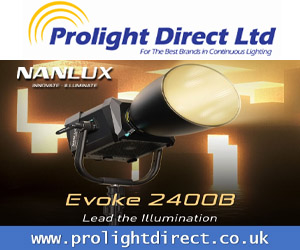Broadcast News
09/12/2016
SIs Pour Their Hearts Into Software & IP Tech

Vendors don't want to fight with their SI partners: George Jarrett plays it again with SAM and talks to ATG Danmon and TSL Systems about the technical knowledge that keeps them ahead of the game...
Two years ago the IABM reported, "If you are a systems integrator you are probably not in a good place at the moment." Two years on and SI specialists are joyfully busy, and confidently secure because they have done their technology homework, and then some; and the vendors have no intention of doubting or challenging the independent values that they bring into play on behalf of end users.
The perspectives on where we stand on systems integration, as SDI subsides and IP swings in, and new skill sets are required, come from one of the big vendors and two of the leading SI specialists. We are at a point in time when refresh cycles come round for individual facilities they will be completely different to the two bites people may have had at SDI.
A hell of a lot of interoperability testing
Tim Felstead, Head of Product Marketing with SAM, is looking forward to SMPTE ratifying 2110 ("That will be a master we can all nail our flags to"), because he detects a break on the implementation of IP systems.
SAM was recently prime contractor for a big multi-studio complex (BCE) that involved seven other AIMS members. "What the customer wanted was off-the-shelf switches, real switching in the IP domain and SDI like performance," said Felstead. "If you are going to replace SDI with IP in a production environment it had better work to expectations of reliability."
Are the vendors working with fellow AIMS members to learn about the new installations required and to develop the skill sets required? And is it the case that the age of open source software means more vendors will manage their own system installations?
"There's a hell of a lot of interoperability testing going on with AIMS members. You won't get on the AIMS interoperability booth at NAB 2017 unless you've been to the interoperability events beforehand and proven your capacity. This is a really good process and discipline. So in effect we're constantly learning from and about each other," said Felstead.
"Skill sets are a more difficult issue. All the manufacturers are learning as fast as they can from every opportunity they can get, but that doesn't mean that the end goal is to become integrators," he added. "We don't want to fight with our SI partners and we want and need them to be able to take over once the systems in IP are more 'plug and play'. Their skills in efficient, clean, well-managed projects for media systems are not what manufacturers do, and I don't expect that to change because the underlying technology changes.
"On the software side of things I do believe the nature of SI will be enhanced by configuration and commissioning skills for software in workflow, MAM, etc., in addition to the project management, capital management and resource management they do day in, day out," he continued.
How much design/envisioning work did SAM have to do in its capacity as lead for the BCE contract, and how difficult was it to assure interoperability between so many AIMS members?
"Interop was pretty easy. Everyone is very willing if an issue comes up to get straight on the case. No issue there at all," said Felstead. "In terms of envisioning work, this is still early in the life cycle of the IP technology refresh. Customers and everyone in SI (BCE is an SI actually, although captive within the RTL group) needs help to design the system to what they need to get done and the requirements they have in terms of reliability and performance.
"In the case of the RTL City project, SAM helped in the final spec and design after being selected, but BCE were pushing the boundaries and leading the charge on behalf of their customer," he added. "Given IP for production systems in 2015 (when BCE started its investigations in earnest) represented a business and technical risk, it's only sensible to have both a business and technical perspective brought to bear. The point about two IP switch vendors being used simultaneously in the same live production was both mitigation of technical and business risk. BCE argued that even with SDI we don't normally deploy redundant links in most production systems for example, so the IP system they built is arguably better in reliability than SDI. Single link was not something they wanted to deploy from IP systems due to systemic risk, something that is quite unconsidered in SDI systems today."
Going forward, what kind of services can the SI specialists offer to sit in tandem with so much open source software?
"Massive," said Felstead. "Enlightened system integrators will be pouring their hearts into software and IP technology so they can truly advise clients on all aspects of the new technology wave.
"This sort of guidance and counsel to customers is what they're good at and manufacturers, while they have a voice, don't have the capacity or inclination to cover the market they way an SI can. Despite technology transitions I don't think the relationship between manufacturers and the SI companies should at its very nature change. And certainly from SAM's point of view, we want and need our SI partners to be successful."
Within minutes of an issue being flagged
Russell Peirson-Hagger, CEO of ATG Danmon UK, set out the basic facts of the move away from SDI, including why system integrators have a good future.
"The relative balance of equipment in the apparatus rooms of modern TV stations has swung from around 80 per cent dedicated broadcast kit and 20 per cent IT servers to the exact opposite. Until quite recently, engineers would spend a significant amount of their time locked in the CAR configuring devices during the course of a system build, all fighting over space. Now the bulk of that activity is performed from their desks by simply remote-accessing into the system," explained Peirson-Hagger. "This brings the advantage of reducing the number of installation technicians required on site. It also allows post-installation technical support to be provided much faster. Within minutes of an issue being flagged, an engineer can be diagnosing an issue and providing the fix."
Software product integration has long been a central part of ATG Danmon's activity, both for new installations and the upgrade or expansion of existing systems. "Customers will always have a great interest in the new technologies available, particularly the benefits that it can bring them, and their best source of that information is from the vendors. When you are looking at the big transition installation, you would expect the vendor to be heavily involved, especially when it is the first of its kind," he added. "However, from my experience the vendors have no intention of taking the role of the systems integrator. They would rather work in a partnership with an SI to ensure the successful deployment of their solution."
The business case for the transition to IP looks good in green field situations, but there appears to be a big gulf between the small companies when compared to big companies like SBS, for which Deluxe MediaCloud put in IP playout and distribution, replacing 110 racks playing out 61 channels with a fully mirrored solution comprised of 10 racks – a large footprint with power savings. That gulf might mean not having the budget to trial IP systems before committing and not having the skill sets required.
"Each case has to be judged on the client's specific needs, including future-proofing and scalability. The fact that there may be a skill shortage with the client for implementing the new technologies is where the SI can step in. We ensure that we are across new technologies and can advise and support the customer through that process," said Peirson-Hagger. "We have been involved in several 'proof of concept' deployments involving client, vendor and ourselves in partnership to ensure that the systems they are considering to implement are both achievable and will work for them.
"There are many factors we take into account when designing a system which we discuss in detail with the client as part of that process. These factors include budget, functionality and timescale, but also the customer's ability to support the system once installed," he added. "As part of the Danmon Group of companies we have a large resource pool of engineers to call upon with a wide range of specialties and offer long-term support contracts for all our systems. We are also able to support a customer with training needs, either in-house or through external vendors."
The future for SI continues to look bright
Where does UHDTV sit in the SI imperative currently? It seems that mezzanine compression is a factor so bit rate becomes an issue. The thought occurred that you no longer deal with engineers as such, but clients know what they want. How has the SI client base changed over the past three years?
"4K UHD has moved from aspiration to must-have in the minds of many content owners and broadcasters and we have already implemented such systems for a number of users. We recently completed a five-camera UHD flyaway for Universal Music Group," said Peirson-Hagger. "This project focused on the design of a complete 4K-production system housed in flight cases, which can be deployed rapidly at music events. It incorporates multiple cameras capturing 16-bit RAW 4K direct to solid-state memory cards. We worked very closely with the customer over a period of time to design this system, exploring several different product offerings and reaching an agreement on the equipment that most effectively met the functionality required and the budget.
"This level of service has long been the value-add of partnering with an SI, and I do not see that changing anytime soon," he added. "The future of broadcast systems integration, like the future of broadcasting itself, continues to look bright. As a systems integrator we need to ensure we are tuned to new developments and ready to act on technology changes. Our customers rely on us to make the right technological choices for them in order to gain maximum benefit from their investment. Wherever the industry progresses, you can be sure we will be following developments closely."
A general migration of skill sets
Julian Knight, CTO of TSL Systems, first considered how the transition from SDI had impacted on the SI trade: it certainly saw IP coming miles out.
"It has had a significant impact for jobs that are actually using it, but we have predominantly baseband projects running through at the moment. The IT side of our work has been a significant part of projects for well over 10 years," he said. "Some very big projects have required some big IT elements, so whilst the nature of how the video and audio is carried is different, the amount of IT in the skill sets has not changed that much. But it is increasing.
"We provide solutions based around all third party kit, so we ourselves don't have R&D, other than the constant fight to keep up with current technology," he added. "As CTO I am facing this constantly day in, day out – judging the delivery of projects and keeping up with technology. Most people in a technical capacity are faced with that dilemma. It is an exciting time, but it is very time poor."
The challenge of balancing the time spent on research is a trick of the trade. Vendors say broadcasters have been sitting on their hands, viewing the business case for dumping SDI and waiting for a standard to respect (SMPTE 2110). But there are many companies who still see technology life as refresh cycles, not revolutions.
"They still exist as the governing factor. The timing of a refresh and deciding what technology to go for is tricky," said Knight. "I was with a client, and they had just built a whole new broadcast centre based round SDI. It does not support 4K or IP. The timing was just that little bit too early, but now any major broadcaster looking at new installations will already have evaluated IP. That will be built into the project plan. It is just down to the timing."
We now see vendors teaming up, as a number of AIMS members (SAM above for example), to manage big transition installations under the banner of interoperability. Are the vendors, in seeking to position their software technology and develop new skills themselves, taking any work away from the SI market?
"There is a general migration of skill sets here," said Knight. "I do not think anything has been taken away, but I do think the skills of the integrator have moved more towards the software integration of vendors' products, and are moving more towards servicing the customers' needs.
"It extends beyond just building the site, to providing some sort of support for the site ongoing," he explained. "What's key here is that no matter how good a single vendor's product or suite of products is, the client still needs an independent party to represent his/her interests for the implementation of a project."
TSL has done some very big projects where it has integrated parties "who were out of their comfort zone", and Knight quoted Sky News Arabia as an instance here.
"Good system integrators can knit products together in a way that none of the vendors would ever contemplate. It would not make business sense for them, and the client will get the best mix."
All users want best of breed, and there is a huge industry effort behind the cause of interoperability. However some proprietary walls continue to exist.
"I fully support the idea that vendors are seeking to become interoperable with their products. It gives them a passport to major project opportunities," said Knight. "At the same time, as an SI, we constantly come up against those that do not comply. The role here, for the SI, is to find the secret piece of software that manages to fit the non-compliant vendors into the rest of the system.
"We work closely with partners who produce that level of software integration, and they fix what looks like it will never work. But a proof of concept would certainly be essential to any project, to de-risk delivery of it. If we hit a brick wall, we would always have a plan B."
It could become pay as you go
The market is awash with open source software and very soon it seems the only hardware left will soon be cameras, lenses, and off-the-shelf IT kit (switches being the big thing now). Looking forward, how will the SI role develop and stay vital five years hence in a software world based on the licensing and OPEX models?
"Regarding open source software, most people are very aware that if you are not careful you could end up with software that is not supported. The SI has a significant role to walk through that area with the client and make sure that we are pulling together supported software," continued Knight.
"Within five years maybe 50% of the SI role will be software integration, and there may be a significant percentage of not only ongoing support, but project management. It could become pay as you go," he added. "We must not lose sight of the fact that all those racks and servers have to be put in, whether it they are for your own premise cloud or somewhere else. Projects always require some basic, one-off delivery element."
When told that Tim Felstead had said: "We don't want to fight with our SI partners and we want and need them to be able to take over once the systems in IP are more 'plug and play'. Their skills in efficient, clean, well-managed projects for media systems are not what manufacturers do," Knight commented: "That's a wonderful concept. The key thing that keeps the SI within its role is that we have to provide that level of independence when it comes to selecting the mix of products, and perhaps even supporting a vendor's product. The vendor can only sell itself, while an SI can actually give credibility to any product. The SI sees the whole story, but no one vendor sees the whole project."
Skill sets are one of the hot subjects of the hour. Many people say to a large extent they are much the same, and that with good training good engineers migrate easily. But they also say that we need IP familiar people. Where does the SI client base sit in this matter?
"If you go back 10 years or so we were building broadcast installations for major multi-channel organisations where the amount of IT equipment, and number of servers and switches involved was significant," said Knight. "It continues to move forward, and there is actually more of a continuum from what we used to have to what we need now. We train up members of our staff with CISCO like training and certification because it is part and parcel of any SI job. It just becomes a bigger chunk. I have had experiences with clients who have had almost zero knowledge, and other clients who are very knowledgeable, so I don't see a trend here."
(JP/LM)
Two years ago the IABM reported, "If you are a systems integrator you are probably not in a good place at the moment." Two years on and SI specialists are joyfully busy, and confidently secure because they have done their technology homework, and then some; and the vendors have no intention of doubting or challenging the independent values that they bring into play on behalf of end users.
The perspectives on where we stand on systems integration, as SDI subsides and IP swings in, and new skill sets are required, come from one of the big vendors and two of the leading SI specialists. We are at a point in time when refresh cycles come round for individual facilities they will be completely different to the two bites people may have had at SDI.
A hell of a lot of interoperability testing
Tim Felstead, Head of Product Marketing with SAM, is looking forward to SMPTE ratifying 2110 ("That will be a master we can all nail our flags to"), because he detects a break on the implementation of IP systems.
SAM was recently prime contractor for a big multi-studio complex (BCE) that involved seven other AIMS members. "What the customer wanted was off-the-shelf switches, real switching in the IP domain and SDI like performance," said Felstead. "If you are going to replace SDI with IP in a production environment it had better work to expectations of reliability."
Are the vendors working with fellow AIMS members to learn about the new installations required and to develop the skill sets required? And is it the case that the age of open source software means more vendors will manage their own system installations?
"There's a hell of a lot of interoperability testing going on with AIMS members. You won't get on the AIMS interoperability booth at NAB 2017 unless you've been to the interoperability events beforehand and proven your capacity. This is a really good process and discipline. So in effect we're constantly learning from and about each other," said Felstead.
"Skill sets are a more difficult issue. All the manufacturers are learning as fast as they can from every opportunity they can get, but that doesn't mean that the end goal is to become integrators," he added. "We don't want to fight with our SI partners and we want and need them to be able to take over once the systems in IP are more 'plug and play'. Their skills in efficient, clean, well-managed projects for media systems are not what manufacturers do, and I don't expect that to change because the underlying technology changes.
"On the software side of things I do believe the nature of SI will be enhanced by configuration and commissioning skills for software in workflow, MAM, etc., in addition to the project management, capital management and resource management they do day in, day out," he continued.
How much design/envisioning work did SAM have to do in its capacity as lead for the BCE contract, and how difficult was it to assure interoperability between so many AIMS members?
"Interop was pretty easy. Everyone is very willing if an issue comes up to get straight on the case. No issue there at all," said Felstead. "In terms of envisioning work, this is still early in the life cycle of the IP technology refresh. Customers and everyone in SI (BCE is an SI actually, although captive within the RTL group) needs help to design the system to what they need to get done and the requirements they have in terms of reliability and performance.
"In the case of the RTL City project, SAM helped in the final spec and design after being selected, but BCE were pushing the boundaries and leading the charge on behalf of their customer," he added. "Given IP for production systems in 2015 (when BCE started its investigations in earnest) represented a business and technical risk, it's only sensible to have both a business and technical perspective brought to bear. The point about two IP switch vendors being used simultaneously in the same live production was both mitigation of technical and business risk. BCE argued that even with SDI we don't normally deploy redundant links in most production systems for example, so the IP system they built is arguably better in reliability than SDI. Single link was not something they wanted to deploy from IP systems due to systemic risk, something that is quite unconsidered in SDI systems today."
Going forward, what kind of services can the SI specialists offer to sit in tandem with so much open source software?
"Massive," said Felstead. "Enlightened system integrators will be pouring their hearts into software and IP technology so they can truly advise clients on all aspects of the new technology wave.
"This sort of guidance and counsel to customers is what they're good at and manufacturers, while they have a voice, don't have the capacity or inclination to cover the market they way an SI can. Despite technology transitions I don't think the relationship between manufacturers and the SI companies should at its very nature change. And certainly from SAM's point of view, we want and need our SI partners to be successful."
Within minutes of an issue being flagged
Russell Peirson-Hagger, CEO of ATG Danmon UK, set out the basic facts of the move away from SDI, including why system integrators have a good future.
"The relative balance of equipment in the apparatus rooms of modern TV stations has swung from around 80 per cent dedicated broadcast kit and 20 per cent IT servers to the exact opposite. Until quite recently, engineers would spend a significant amount of their time locked in the CAR configuring devices during the course of a system build, all fighting over space. Now the bulk of that activity is performed from their desks by simply remote-accessing into the system," explained Peirson-Hagger. "This brings the advantage of reducing the number of installation technicians required on site. It also allows post-installation technical support to be provided much faster. Within minutes of an issue being flagged, an engineer can be diagnosing an issue and providing the fix."
Software product integration has long been a central part of ATG Danmon's activity, both for new installations and the upgrade or expansion of existing systems. "Customers will always have a great interest in the new technologies available, particularly the benefits that it can bring them, and their best source of that information is from the vendors. When you are looking at the big transition installation, you would expect the vendor to be heavily involved, especially when it is the first of its kind," he added. "However, from my experience the vendors have no intention of taking the role of the systems integrator. They would rather work in a partnership with an SI to ensure the successful deployment of their solution."
The business case for the transition to IP looks good in green field situations, but there appears to be a big gulf between the small companies when compared to big companies like SBS, for which Deluxe MediaCloud put in IP playout and distribution, replacing 110 racks playing out 61 channels with a fully mirrored solution comprised of 10 racks – a large footprint with power savings. That gulf might mean not having the budget to trial IP systems before committing and not having the skill sets required.
"Each case has to be judged on the client's specific needs, including future-proofing and scalability. The fact that there may be a skill shortage with the client for implementing the new technologies is where the SI can step in. We ensure that we are across new technologies and can advise and support the customer through that process," said Peirson-Hagger. "We have been involved in several 'proof of concept' deployments involving client, vendor and ourselves in partnership to ensure that the systems they are considering to implement are both achievable and will work for them.
"There are many factors we take into account when designing a system which we discuss in detail with the client as part of that process. These factors include budget, functionality and timescale, but also the customer's ability to support the system once installed," he added. "As part of the Danmon Group of companies we have a large resource pool of engineers to call upon with a wide range of specialties and offer long-term support contracts for all our systems. We are also able to support a customer with training needs, either in-house or through external vendors."
The future for SI continues to look bright
Where does UHDTV sit in the SI imperative currently? It seems that mezzanine compression is a factor so bit rate becomes an issue. The thought occurred that you no longer deal with engineers as such, but clients know what they want. How has the SI client base changed over the past three years?
"4K UHD has moved from aspiration to must-have in the minds of many content owners and broadcasters and we have already implemented such systems for a number of users. We recently completed a five-camera UHD flyaway for Universal Music Group," said Peirson-Hagger. "This project focused on the design of a complete 4K-production system housed in flight cases, which can be deployed rapidly at music events. It incorporates multiple cameras capturing 16-bit RAW 4K direct to solid-state memory cards. We worked very closely with the customer over a period of time to design this system, exploring several different product offerings and reaching an agreement on the equipment that most effectively met the functionality required and the budget.
"This level of service has long been the value-add of partnering with an SI, and I do not see that changing anytime soon," he added. "The future of broadcast systems integration, like the future of broadcasting itself, continues to look bright. As a systems integrator we need to ensure we are tuned to new developments and ready to act on technology changes. Our customers rely on us to make the right technological choices for them in order to gain maximum benefit from their investment. Wherever the industry progresses, you can be sure we will be following developments closely."
A general migration of skill sets
Julian Knight, CTO of TSL Systems, first considered how the transition from SDI had impacted on the SI trade: it certainly saw IP coming miles out.
"It has had a significant impact for jobs that are actually using it, but we have predominantly baseband projects running through at the moment. The IT side of our work has been a significant part of projects for well over 10 years," he said. "Some very big projects have required some big IT elements, so whilst the nature of how the video and audio is carried is different, the amount of IT in the skill sets has not changed that much. But it is increasing.
"We provide solutions based around all third party kit, so we ourselves don't have R&D, other than the constant fight to keep up with current technology," he added. "As CTO I am facing this constantly day in, day out – judging the delivery of projects and keeping up with technology. Most people in a technical capacity are faced with that dilemma. It is an exciting time, but it is very time poor."
The challenge of balancing the time spent on research is a trick of the trade. Vendors say broadcasters have been sitting on their hands, viewing the business case for dumping SDI and waiting for a standard to respect (SMPTE 2110). But there are many companies who still see technology life as refresh cycles, not revolutions.
"They still exist as the governing factor. The timing of a refresh and deciding what technology to go for is tricky," said Knight. "I was with a client, and they had just built a whole new broadcast centre based round SDI. It does not support 4K or IP. The timing was just that little bit too early, but now any major broadcaster looking at new installations will already have evaluated IP. That will be built into the project plan. It is just down to the timing."
We now see vendors teaming up, as a number of AIMS members (SAM above for example), to manage big transition installations under the banner of interoperability. Are the vendors, in seeking to position their software technology and develop new skills themselves, taking any work away from the SI market?
"There is a general migration of skill sets here," said Knight. "I do not think anything has been taken away, but I do think the skills of the integrator have moved more towards the software integration of vendors' products, and are moving more towards servicing the customers' needs.
"It extends beyond just building the site, to providing some sort of support for the site ongoing," he explained. "What's key here is that no matter how good a single vendor's product or suite of products is, the client still needs an independent party to represent his/her interests for the implementation of a project."
TSL has done some very big projects where it has integrated parties "who were out of their comfort zone", and Knight quoted Sky News Arabia as an instance here.
"Good system integrators can knit products together in a way that none of the vendors would ever contemplate. It would not make business sense for them, and the client will get the best mix."
All users want best of breed, and there is a huge industry effort behind the cause of interoperability. However some proprietary walls continue to exist.
"I fully support the idea that vendors are seeking to become interoperable with their products. It gives them a passport to major project opportunities," said Knight. "At the same time, as an SI, we constantly come up against those that do not comply. The role here, for the SI, is to find the secret piece of software that manages to fit the non-compliant vendors into the rest of the system.
"We work closely with partners who produce that level of software integration, and they fix what looks like it will never work. But a proof of concept would certainly be essential to any project, to de-risk delivery of it. If we hit a brick wall, we would always have a plan B."
It could become pay as you go
The market is awash with open source software and very soon it seems the only hardware left will soon be cameras, lenses, and off-the-shelf IT kit (switches being the big thing now). Looking forward, how will the SI role develop and stay vital five years hence in a software world based on the licensing and OPEX models?
"Regarding open source software, most people are very aware that if you are not careful you could end up with software that is not supported. The SI has a significant role to walk through that area with the client and make sure that we are pulling together supported software," continued Knight.
"Within five years maybe 50% of the SI role will be software integration, and there may be a significant percentage of not only ongoing support, but project management. It could become pay as you go," he added. "We must not lose sight of the fact that all those racks and servers have to be put in, whether it they are for your own premise cloud or somewhere else. Projects always require some basic, one-off delivery element."
When told that Tim Felstead had said: "We don't want to fight with our SI partners and we want and need them to be able to take over once the systems in IP are more 'plug and play'. Their skills in efficient, clean, well-managed projects for media systems are not what manufacturers do," Knight commented: "That's a wonderful concept. The key thing that keeps the SI within its role is that we have to provide that level of independence when it comes to selecting the mix of products, and perhaps even supporting a vendor's product. The vendor can only sell itself, while an SI can actually give credibility to any product. The SI sees the whole story, but no one vendor sees the whole project."
Skill sets are one of the hot subjects of the hour. Many people say to a large extent they are much the same, and that with good training good engineers migrate easily. But they also say that we need IP familiar people. Where does the SI client base sit in this matter?
"If you go back 10 years or so we were building broadcast installations for major multi-channel organisations where the amount of IT equipment, and number of servers and switches involved was significant," said Knight. "It continues to move forward, and there is actually more of a continuum from what we used to have to what we need now. We train up members of our staff with CISCO like training and certification because it is part and parcel of any SI job. It just becomes a bigger chunk. I have had experiences with clients who have had almost zero knowledge, and other clients who are very knowledgeable, so I don't see a trend here."
(JP/LM)
More Systems Integration Stories
13/03/2018
BFV's Big Interview: Danmon Group
This month, Broadcast Film & Video discusses System Integration, the future of broadcasting, and technical development with Christoffer Kay, Chief Ope
BFV's Big Interview: Danmon Group
This month, Broadcast Film & Video discusses System Integration, the future of broadcasting, and technical development with Christoffer Kay, Chief Ope
08/02/2018
Systems Integration: Successes, Challenges And What's Next
The broadcast industry is in a strange position where a slight reticence remains around new technologies' suitability for live operation. This means t
Systems Integration: Successes, Challenges And What's Next
The broadcast industry is in a strange position where a slight reticence remains around new technologies' suitability for live operation. This means t
08/03/2017
AKA Design Welcome The Rise Of Flexible Working
Sit-stand desks are said to be beneficial towards a person's health, mood and productivity, according to research, so it's no surprise that AKA Design
AKA Design Welcome The Rise Of Flexible Working
Sit-stand desks are said to be beneficial towards a person's health, mood and productivity, according to research, so it's no surprise that AKA Design
15/12/2016
Timeline Television Completes Design & Build Of BT Sport's Home
We were delighted to have been selected by BT Sport to lead on the transformation of part of the former International Broadcast Centre at the Queen El
Timeline Television Completes Design & Build Of BT Sport's Home
We were delighted to have been selected by BT Sport to lead on the transformation of part of the former International Broadcast Centre at the Queen El
15/12/2016
System Design Should Include Service Design
The term 'tech support' can conjure up some not-so-flattering images of sun-shy geeks speaking their own kind of binary language… but when a system cr
System Design Should Include Service Design
The term 'tech support' can conjure up some not-so-flattering images of sun-shy geeks speaking their own kind of binary language… but when a system cr
09/12/2016
SIs Pour Their Hearts Into Software & IP Tech
Vendors don't want to fight with their SI partners: George Jarrett plays it again with SAM and talks to ATG Danmon and TSL Systems about the technical
SIs Pour Their Hearts Into Software & IP Tech
Vendors don't want to fight with their SI partners: George Jarrett plays it again with SAM and talks to ATG Danmon and TSL Systems about the technical
20/07/2016
Altered Images Completes Coventry University Project
Coventry University is a forward-looking, modern university with a proud tradition as a provider of high quality education and a focus on applied rese
Altered Images Completes Coventry University Project
Coventry University is a forward-looking, modern university with a proud tradition as a provider of high quality education and a focus on applied rese
20/06/2016
System Integrator Looks To The Future
The transition to 4K and IP architecture implies more sophistication, and for systems integrators such as dB Broadcast, more intelligent systems mean
System Integrator Looks To The Future
The transition to 4K and IP architecture implies more sophistication, and for systems integrators such as dB Broadcast, more intelligent systems mean
11/03/2016
IP Infrastructure Is Ready For The Challenge
In this second of two articles, Tom Swan, Sales and Marketing Director of dB Broadcast, explains how the system integrator keeps abreast of all the ch
IP Infrastructure Is Ready For The Challenge
In this second of two articles, Tom Swan, Sales and Marketing Director of dB Broadcast, explains how the system integrator keeps abreast of all the ch
16/02/2016
IP Infrastructure Is Ready For The Challenge
In this latest article, Tom Swan of system integrator dB Broadcast considers the extent to which IP / IT infrastructure is ready for all the challenge
IP Infrastructure Is Ready For The Challenge
In this latest article, Tom Swan of system integrator dB Broadcast considers the extent to which IP / IT infrastructure is ready for all the challenge















